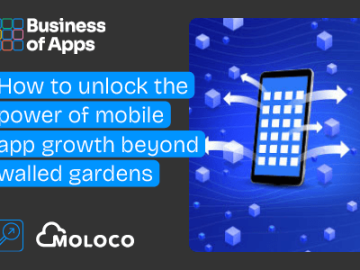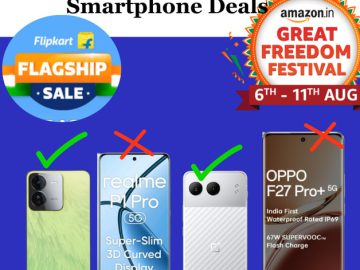With the abundance of media platforms, both online and offline, deciding which ones to prioritize is a craft that takes time to master. That’s why any app marketer who cares about where their budget is going should formulate an optimal media mix, whether it’s to reduce customer acquisition cost (CAC) or increase return on ad spend (ROAS).
As your app scales, figuring out where to spend your advertising dollars becomes a delicate balancing act. With the abundance of media platforms, both online and offline, deciding which ones to prioritize is a craft that takes time to master. That’s why formulating an optimal media mix is a skill that should be learned by any app marketer who cares about where their budget is going, whether it’s to reduce customer acquisition cost (CAC) or increase return on ad spend (ROAS). Another important thing to consider is determining which channels deserve the most attention, and when’s the right time to switch things up.
Leading independent mobile DSP Remerge interviewed growth marketer Paul Kovalski to learn more about his experience at Self, an American credit-building app that has helped over 4 million users improve their credit scores. Based on a podcast episode on Apptivate, this article covers strategies for choosing profitable advertising channels, tips for creative testing, and the importance of aligning your approach with user behavior.
1. Prioritize before you optimize
Imagine a regular workday when you’re trying to juggle several tasks at once: responding to messages, attending meetings, and preparing lunch. Some tasks need more focus than others and the amount of attention you put in depends on how complex or urgent the matter is. The same logic applies to media mix optimization. Consider the different ecosystems your brand appears in: from billboards on the freeway and online mailing lists to pre-roll ads on YouTube and banners on mobile devices. The challenge here is knowing which of them require more attention at different stages of growth and how to allocate your budget effectively.
Paul emphasizes that when you’re just starting out, focus on the things that are already working. “When you’re a smaller company, it makes sense to start on a few channels that really work for you, and then continue to scale until you hit diminishing returns.” In other words, go with the winning platforms, and only after you’ve mastered them, should you think about diversifying into new areas.
2. Know your north star
Before diving into the specifics of which channels to choose, Paul stresses the importance of defining your core goals or north star. These goals should guide your media mix decisions. “If you are seeing the customers come in and you’re doing that at an efficient and profitable rate, you’re able to scale,” Paul says.
Once the targets are set, it’s time to analyze the performance of each channel. However, comparing them is not always straightforward. Every channel, be it social media, TV, in-app ads, or web banners, has a different metric. “Comparing channels can be challenging because they have very different measurement methodologies,” Paul notes. For example, try shifting the budget between web-based channels that have similar CPAs. To get even more specific, use some media mix modeling tools and run incrementality tests for a more holistic view and not take the initial results as the single source of truth. For a longer read on incrementality for app retargeting, check out this guide.

3. Practice The 80:20 Rule
One of the best practices Paul swears by is the 80:20 rule. “80% of your budget should go toward channels that are proven to work, and 20% should be allocated for testing new ideas.” This ratio allows you to get results while also experimenting with fresh opportunities that could yield even better performance in the future. Once your media mix is operating at a seven or eight-figure monthly, you can consider expanding across up to fifteen different channels, depending on the market demand. Generally speaking, the first dollars you spend should be on the audiences that show the highest interest in your product. This can translate to a relatively high conversion rate and low customer acquisition costs.
Testing plays a big role in optimizing the media mix, but don’t go all in on an unfamiliar channel. Your team’s bandwidth should be considered first – are they ready to test a new channel? Do they have the resources and understand the scope of the task? Answer these questions first before entering new territories. Once you have that part figured out, expect to do some waiting. Some channels, particularly app networks, might show irregular figures in the first couple of weeks upon campaign launch. Have some patience and wait till things are settled, which could take months. Eventually, your cost-pers will start to decrease and you’ll have a more accurate idea of what the benchmark is.
Once you’ve found channels that bring results, it’s time to focus on creative optimization. According to Paul, creative production and optimization have become even more important as audience targeting and bidding become increasingly automated. Paul suggests starting small with creative testing. Instead of spending big on large campaigns for expensive channels like TV, begin by testing different messaging and creative variations on cost-effective platforms like Facebook. Start with the low-cost, easy-to-test areas like Facebook, show a wide variety of design and messaging variations, and identify the winning combination. From there, you can slowly scale up the budget and venture into more expensive spaces like large-scale TV campaigns.
4. Diversify Your Creative Strategy On All Levels
Another vital part of optimizing the media mix is creative diversification. As Paul points out, it’s easy to get caught up in launching new products or features and putting all your emphasis on that. However, it’s important to maintain an even distribution of creative efforts across all your products and target personas.
For example, if one product is driving the majority of your success, ensure that creative testing continues for that product while exploring new opportunities with other product lines. Diversification also applies to different personas and user journeys. Customers will interact with your brand at various stages in their journey – some may be more familiar with your app, while others are discovering it for the first time. “I think this goes back to the demand and the psychological or emotional state that a consumer is in, based on their proclivity to purchase a product. It’s kind of akin to dating. You wouldn’t go on a first date with someone and ask them to marry you.” Paul says.
The success of your campaign also lies on how unique your creatives are and if they are consistent to your brand’s look and feel. “You want your customers to remember your brand. I see a lot of advertisers right now that are showing ads that don’t have their brand color. It has some good copy and it’s going to get them conversions, but they’re missing out on the long tail brand building that they could be doing if they had a more aligned branding and messaging strategy across their funnel and development.” Paul adds.
Working with a marketing partner that has a creative team to enhance your visuals is also worth looking into. Remerge has an in-house design agency that offers a 360º creative solution that covers video production, interactive ad designs, and strategic copywriting support.

5. Identify A Common Message Between The Channels
Paul encourages marketers to apply insights from one channel to another. “What’s working on YouTube might work on TV, and what’s working on Snap is probably going to work on TikTok,” he says. Of course, each channel has its nuances, but understanding where there are similarities allows you to adapt and reuse successful creatives, saving time and budget. Think about the context of the consumer when they see your ad; if it’s an ad on a subway, consider a messaging that relates to ‘being on-the-go’. If they are on a gaming app, use visual elements that relate to scoring and winning. It’s also worth studying what state of mind your users are in. Getting some hints from trending content that’s popular on the platform you are publishing on can inspire your ads.
Ultimately, it all comes down to understanding your customer. Paul shares a personal lesson from his experience at a meditation retreat. He urges marketers to put themselves in the shoes of their customers. “Close your eyes and think about their pain points, their challenges, and what it’s like for them when they interact with your product.” This exercise allows you to design creatives that resonate with your audience on an emotional level that makes them want to take action — something that a generic ad can’t do.
Conclusion
Cooking up a healthy and balanced media mix is a bit like creating a nutrition plan that supplies the right amount of energy for your body. You should always start with a realistic target, identify the ‘ingredients’ that leave the best effect, and adjust the dosage accordingly. But most of all, listen to your audience with empathy. As long as your ads communicate with your users in a meaningful way, your app will make its way to be part of their daily diet.
For more digestible insights from inspiring app marketers across the world, tune in to Apptivate, the weekly podcast published by award-winning mobile DSP Remerge. Or if you’re already inspired to start your first retargeting or user acquisition campaign, why not get in touch with their team through the contact form here.





